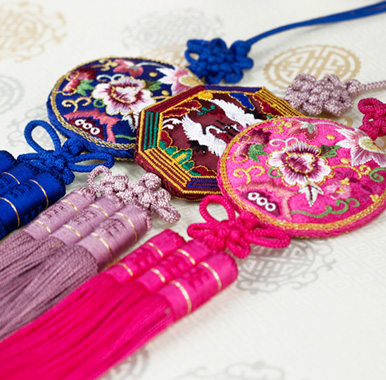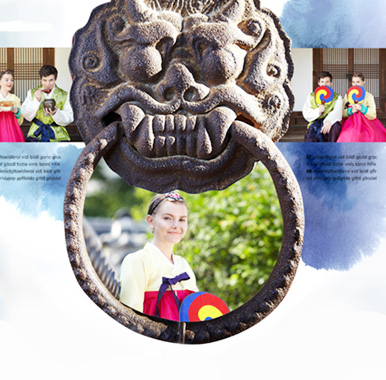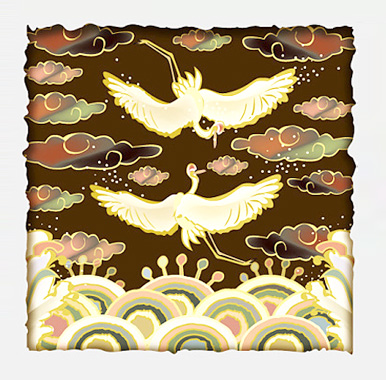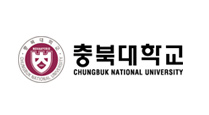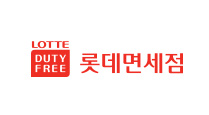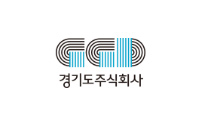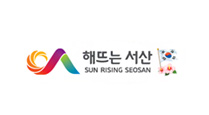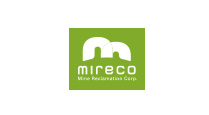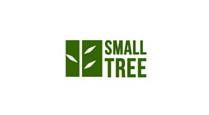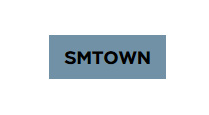Korean Traditional Pattern
Maximize a sense of aesthetics
Courtesy and good luck
body text
- 1 We may say that the traditional patterns have the strong characteristics of a kind of a shamanistic object which we entrust with our realistic wish for an ideal life.
- 2 It may be said that our traditional patterns are arts expressed by symbolic signs or the second nature in which the collective values and emotions of our people are fixed and represented by common notions.
- 3 Patterns are a part of the life art, but they do not exist as an object of appreciation. Patterns are symbolic sculptures which play a role as a shamanistic object which contains the desire and wish of human beings or as a medium which expresses and conveys such emotions.
- 4The awe and wonder at nature and mystical emotions are pervasive in Korean traditional patterns.
- 5 They contain longing for an ideal world, wish for happiness, abundant affection and prayer for good auspice.
- 6 In general, the patterns of our country have had many buddhistic elements since the Three Kingdom Period, but they also have some confucian and taoistic elements.
- 7 The auspicious patterns used for applied fine arts have many elements symbolizing descendent prosperity such as great happiness, long life, son preference and many offspring.
Human figure design
It means the patterns expressing taoist hermits, Buddha, Four heavenly guardians of Buddhism, and goblins.
- Goblin pattern
- 1. The goblins of our country show a very humane and humorous image.
- 2. The goblin patterns incised on roofs, bridges and windows played a role in driving away evil spirits and protecting people.
Animal design
The animal designs have symbolic meanings created by the consciousness of human beings as well as simply by the shapes of those animals.
- Dragon
- 1. It is a mysterious animal with the abilities and advantages of all the real and imaginary animals.
- 2. With regard to the shape of a dragon, it is said that its head looks like that of a snake, its horn that of a deer, its eye that of a ghost, its neck that of a snake, its belly that of a big shell, its scale that of a carp, its claw that of a hawk, and its sole that of a tiger.
- 3. The dragon was regarded as the leader of all animals.
- 4. There are dragons with scales, dragons with wings, and baby dragons.
- 5. The dragon is also considered the animal that controls all natural phenomena.
- 6. The dragon also controls floods and droughts and is regarded as the god of the sea that controls voyage and fishing operation, too.
- 7. The dragon has the ability to repel evil spirits and bring good luck.
- Phoenix
- 1. As a sacred, imaginary bird, it was considered one of four mystical animals together with giraffe, turtle, and dragon.
- 2. The male of the phoenix is called 'Bong' and its female is called 'Hwang' in Korean.
- 3. It is said that the world will be peaceful if a phoenix comes into the world.
- Fish
- 1. It may be said that fish designs have the shamanistic meaning, praying richness through fishing activities.
- Tiger
- 1. While the tiger is courageous, dignified, cruel and greedy, it prevents diseases and is a symbol of fortune.
- 2. There was a custom by which at the beginning of every year, people sticked a tiger picture to the main gate or the inner gate together with a dragon picture to repel evil spirits. It was the function of driving away evil spirits.
- 3. The tiger symbolizes the courage and martial arts of a warrior.
- Haetae
- 1. Haetae is also called 'Haechi' and an imaginary animal.
- 2. It has one horn, resembles a sheep, and is regarded as a mystical creature.
- 3. As it has a talent for deciding on the right and the wrong, it has done many wise things for sage kings.
- 4. Haetae was considered to be a righteous animal that butts a person with its horn if he/she commits a misdeed.
- 5. During the Joseon Dynasty, it was used on the breast and back of the uniform for Daesaheon and also used as a norigae or for the decoration of a pocket.
- Crane
- 1. The crane has been recognized as a mysterious, spiritual being.
- 2. As one of ten traditional symbols of longevity, it symbolizes purity and longevity.
- 3. It has the meaning of a taste for the arts, living a life of separation from the world.
- Carp
- 1. The carp is a representative symbolic icon which means public service appointment.
- 2. It may be said that the carp expresses the symbol wishing that classical scholars would pass first in a state examination.
- 3. The carp is used not only as a material of pictures, but also as a decoration of buildings.
- 4. The carp pattern is a symbol which is directly related to filial duty which is one of Confucian virtues.
Plant design
- 1. In particular, an important material for patterns among plants is a flower.
- 2. Even though there is no particular symbolism for flowers, they represent beauty.
- 3. There are many cases in which beautiful decorations are used by expressing general flowers, not particular flowers.
- 4. The materials forming a great part of plant patterns are lotuses and vines.
- 5. It is because the lotus was recognized as an important plant by various ideas and religions.
- 6. Vine designs are frequently used as patterns because they have the meanings of longevity and continuity of good things and play a role in making other patterns stand out.
- 7. There are many cases in which the vine designs are normally used together with lotus, chrysanthemum, peony, and Bosanghwa(As a variant of lotus, it gives a feeling of being a little more colorful. It was a flower representing the heaven.
- Lotus
- 1. It may be said that the lotus is a flower representing Buddhism.
- 2. Though it grows in a dirty wetland, it is not stained with dirt. So, it was considered a symbol of cleanliness and purity.
- 3. The lotus indicates understanding the teachings of Buddha such as transcendence, Buddhahood and purification.
- 4. The lotus incised on the items related to women is a symbol of creation of life and reproduction & prosperity.
- 5. The lotus patterns often have water birds pecking at the lotus. It means pregnancy and arrival of a new son.
- 6. If the lotus and water birds are incised together on the objects used by classical scholars, it means wishing for passing the state examination.
- 7. Besides, the patterns with the lotus and fish together mean a comfortable and leisurely life.
- Chrysanthemum design
- 1. Chrysanthemum is the oldest flower in history among ornamental plants cultivated in the East.
- 2. As one of the four Gracious Plants with Japanese apricot flower, orchid, and bamboo, it has been considered very precious.
- 3. Chrysanthemum is a flower symbolizing cleanliness, elegance, and constancy.
Artifact design
When they used artifacts as a pattern, they put emphasis on its meaning rather than its shape.
- Seven Treasure design
- 1. Seven Treasure designs are things that are auspicious and beneficial to our life.
- 2. Chilbo means Seven Treasures such as coin, water buffalo horn, Bangseung, book, wormwood, mirror, and Teukgyeong(a kind of musical instrument.
- 3. The coin symbolizes fortune and the water buffalo horn means great fortune.
- 4. The Bangseung pattern is in the shape of a diamond, which is a decoration made of gold paper. It is attached to the four corners or edges of wrapping cloth used for occasions of congratulation. They use this pattern hoping that something good would happen.
- 5. Art books are what makes a design of the shapes of picture books and books. The patterns mean happiness and wealth and indicate smooth public life.
- 6. The leaves of wormwood are used as oriental medicine. The wormwood is said to have been used to kindle a fire. Therefore, it was considered precious and means longevity and a good auspice.
- 7. Mirror was considered a symbol of a king or class with power and means great fortune.
- 8. Teukgyeong is one of ancient musical instruments. It is made of jade or stone. It looks like the Chinese character meaning a 'person(人)'. People valued its sound in the past.
Natural landscape design
- 1.Natural landscape designs mean the patterns based on nature, excluding animals and plants.
- 2.Its materials are the sun, the moon, clouds, and stars in the sky.
- 3.There are landscape designs which look like landscape paintings and oddly shaped stone designs showing rocks.
- 4.There are many cases in which they mean longevity.
- Cloud pattern
- 1. The patterns widely used among natural landscape designs are cloud patterns.
- 2. Ancient people believed that they could attain Buddhahood or go up to the heaven on clouds after death if they cultivated virtues during their lifetime.
Letter design
By incising auspicious letters on objects, people wanted to achieve their ends as the letters mean.
- Longevity(壽) and fortune(福)
- 1. The representative materials for longevity were turtles and peaches.
- 2. By using the character 'longevity(壽)', people directly prayed for long life.
- 3. Letter designs are embroidered on clothes and widely used for wooden rice-cake patterns or honey-cake boards.
- 4. Sometimes, longevity(壽) and fortune(福) are used together as a longevity & fortune pattern.
- 5. There are designs for health and peace(康寧),
- 6. There are son preference designs praying for the prosperity of descendents.
Geometric design
- 1. The patterns showing horizontal lines, vertical lines, diagonal lines or circles are called a 'geometric design'.
- 2. The geometric design is the most primitive types of patterns used from the prehistoric ages.
- 3. The tools made in the New Stone Age and the Bronze Age show continued stripe, circle, or concentric circle patterns.
- 4. It is said that people at that time incised those patterns to indicate the sun, sunlight and rain.
- 5. In addition to the figure patterns, the designs classified as a geometric design include Taegeuk design, eight-trigram design, ghost-eye design, and turtle-back design.
- Taegeuk design and eight-trigram design
- 1. The Taegeuk design means the birth, development and prosperity of the change caused by the balance of yin and yang.
- 2. The eight trigrams explain all natural phenomena and fortunes.
- 3. People believed that the rise & fall and fortunes of human beings could coincide with the rules of nature.
- 4. Each trigram has the symbols of yin and yang, nature, animal, human body, and family particulars.
Reproduced from Wikimedia Foundation, Inc.

